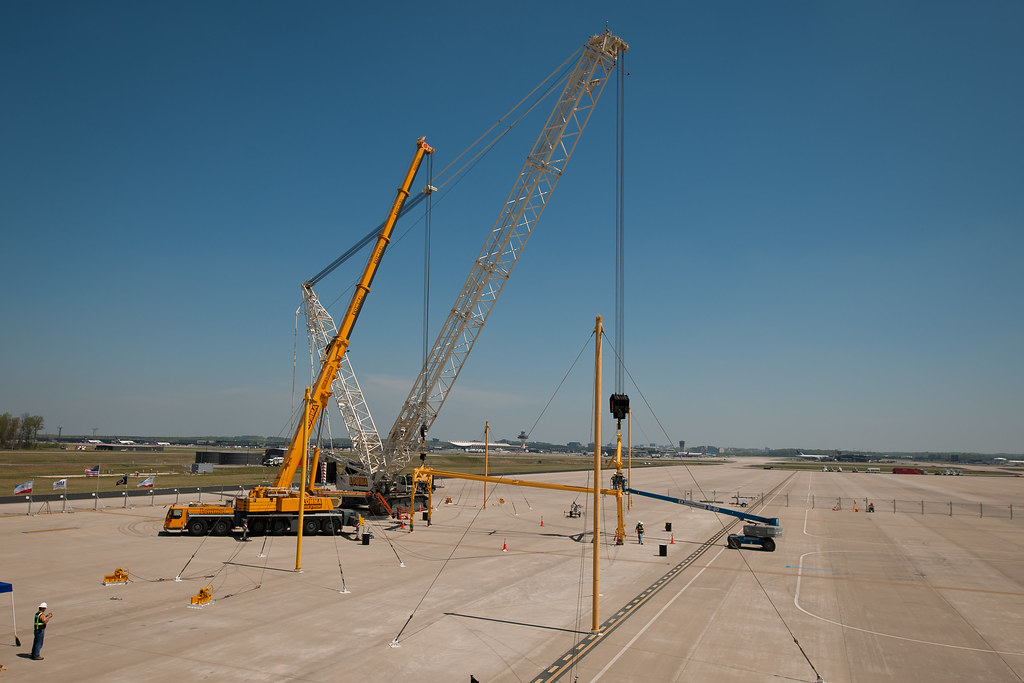
How to Calculate Crane Load Capacity Without a Load Chart
Crane Load Capacity Without a Load Chart : In situations where you don’t have access to a load chart, calculating crane load capacity can be a challenging but essential task. While load charts provide precise data for specific crane configurations, there are alternative methods you can employ to estimate load capacity. In this article, we will explore how to calculate crane load capacity without a load chart, emphasizing safety and accuracy.
1. Introduction
In certain scenarios, such as using older cranes or working in remote locations, obtaining a load chart may not be possible. Under these circumstances, it’s crucial to employ alternative methods for calculating crane load capacity to ensure safety and efficiency.
2. Factors Affecting Crane Load Capacity
Before diving into the calculations, let’s review the key factors that influence a crane’s load capacity:
- Boom Length: The longer the boom, the lower the load capacity.
- Boom Angle: A greater angle reduces the load capacity.
- Load Radius: The farther the load from the crane’s center, the lower the capacity.
- Counterweights: Adding or removing counterweights can impact load capacity.
3. Estimating Boom Length
Measure the boom length from the base to the tip of the extended boom. Use a tape measure or laser rangefinder for accuracy.
4. Determining Boom Angle
Determine the angle at which the boom will be operated. You can use a protractor or inclinometer to measure the angle with respect to the horizontal.
5. Assessing Load Radius
Measure the distance between the load and the crane’s center (load radius). Ensure this measurement is precise, as inaccuracies can lead to incorrect calculations.
6. Calculating Load Capacity
Now that you have the necessary measurements, you can estimate the crane’s load capacity using the following formula:
Load Capacity (in pounds) = (Boom Length (in feet) – Load Radius (in feet)) × Crane’s Rated Capacity (in pounds per foot)
Keep in mind that this formula provides an estimate and does not guarantee the crane’s exact load capacity. It’s crucial to err on the side of caution and avoid exceeding the calculated capacity to ensure safety.
7. Safety Considerations
When calculating crane load capacity without a load chart, safety should be your top priority. Here are some safety considerations:
- Always use conservative estimates and assume a lower load capacity.
- Conduct thorough inspections of the crane and equipment to ensure their reliability.
- Follow industry safety guidelines and regulations.
- Prioritize the safety of workers and bystanders at all times.
Scenario: You are working with a mobile crane, and you need to determine its load capacity. Unfortunately, you do not have access to a load chart. The crane has the following specifications:
- Boom Length (L): 60 feet
- Boom Angle (A): 25 degrees
- Load Radius (R): 30 feet
You also know that the crane’s rated capacity is 1,000 pounds per foot.
Calculating Load Capacity:
Use the following formula to calculate the crane’s load capacity:
Load Capacity (in pounds) = (Boom Length (in feet) – Load Radius (in feet)) × Crane’s Rated Capacity (in pounds per foot)
- Subtract the load radius from the boom length: Load Capacity = (60 feet – 30 feet)
- Calculate the difference: Load Capacity = 30 feet
- Now, multiply the difference by the crane’s rated capacity per foot: Load Capacity = 30 feet × 1,000 pounds per foot
- Perform the calculation: Load Capacity = 30,000 pounds
So, based on the provided crane specifications, the estimated load capacity for this scenario is 30,000 pounds. However, please remember that this is an estimate, and it’s crucial to prioritize safety by assuming a lower load capacity and following safety guidelines. If possible, consult with a qualified engineer or crane expert for further evaluation and confirmation.
How To Calculate Crane Load Capacity?
How To Calculate Crane Percentage Capacity
How to Fill a Lifting Plan for a Crane
How to Calculate SWL of Wire Rope Sling
How to Calculate Safe Man-Hours Worked at Worksite
8. Conclusion
While calculating crane load capacity without a load chart is less precise, it can be a valuable skill in situations where load charts are unavailable. By understanding the key factors that influence load capacity and following the steps outlined in this article, you can estimate load capacity with reasonable accuracy while maintaining a strong emphasis on safety.
9. FAQs
Q1: Can I trust the load capacity calculated without a load chart? The load capacity calculated without a load chart provides an estimate and should be considered conservative. Always prioritize safety and avoid exceeding the calculated capacity.
Q2: Are there any online tools or software for estimating crane load capacity? Some online tools and software may assist in estimating crane load capacity, but they should be used cautiously and cross-referenced with industry standards.
Q3: What should I do if the estimated load capacity is close to the crane’s rated capacity? In cases where the estimated load capacity is near the crane’s rated capacity, it’s advisable to consult with a qualified engineer or crane expert for further evaluation.
Q4: Can counterweights be added to increase load capacity in this scenario? Adding counterweights can increase load capacity to some extent, but it should be done carefully and within the crane’s design limits.
Q5: How often should I recalculate load capacity when working without a load chart? Regularly recalculate load capacity as conditions change, such as altering boom length, angle, or load radius. Always err on the side of caution and prioritize safety.
























